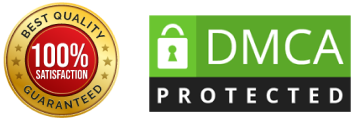EBP is an important concept in the field of nursing. It involves the application of research evidence, clinical judgment, and patient preferences, To enhance client outcomes. It entails a sequential procedure of finding, filtering, and implementing the most credible and suitable data within the clinical setting.
Understanding Evidence-Based Practice
In a simple context, it’s not about applying research evidence only in nursing practice. But in engaging the clients. And also their preferences in the dosage.
- Research Evidence: This comprises results from randomized controlled trials, Cochrane systematic reviews, and clinician’s guides. This gives comprehensive information on the efficacy of various approaches and therapies.
- Clinical Expertise: This comprises the practice, proficiency, and expertise enhanced through the practice of the nurses. Clinical experience is beneficial. Especially when it comes to integrating research findings into clinical practice for the benefit of the specific patient.
- Patient Values & Preferences: This takes into account the self-determination of the patients concerning their health matters.
Examples of Evidence-Based Practice
EBP is a problem-solving approach in healthcare that uses the best available research evidence, clinical experience, and patient preferences to make the best clinical decision.
Furthermore, this model improves patient outcomes, enhances care quality, and optimises healthcare resources. Also, the application of EBP can be seen across all the medical disciplines, including nursing, physiotherapy, psychology, and surgical care.
Here are some real-world examples that show how EBP is transforming modern healthcare delivery.
1. Hand hygiene practices example
Here comes one of the most well-known examples of EBP in action is the use of strict hand hygiene protocols to reduce healthcare-associated infections.
Moreover, numerous studies, including the systematic reviews by WHO and the Centers for Disease Control and Prevention (CDC), have shown that alcohol-based hand sanitizers and regular handwashing dramatically reduce the transmission of infectious agents.
Furthermore, hospitals worldwide are not using hand hygiene policies based on this evidence. Also, compliance is monitored using different EBP tools, and staff are trained using different research-backed methods.
The outcomes for this have been a significant reduction in HAIs such as MRSA and Clostridium difficile infections. Hence, this shows the power of EBP in infection control.
2. Pressure Ulcer Prevention In Bedridden Patients
Here comes another example. Pressure Ulcers are a serious concern in long-term and acute care settings. EBP has driven the development of specific guidelines that help prevent these injuries.
The research shows that regular patient repositioning, the use of pressure-relieving mattresses, and routine skin assessments as effective strategies.
Furthermore, for example, studies have shown that changing the position of patients every two yours helps relieve pressure on vulnerable areas like heels and sacrum. Moreover, the national pressure injury advisory panel, or as we call it, NPIAP, has developed evidence-based protocols that are now widely used in hospitals and nursing homes, significantly reducing the incidence of pressure ulcers.
3. Cognitive-Behavioral Therapy (CBT) in Mental Health
In the field of mental health, Cognitive Behavioral Therapy or CBT is an evidence-based intervention. Moreover, it is proven effective for treating a range of conditions, including anxiety, depression, disorders, and PTSD.
Additionally, randomized controlled trials have repeatedly shown that CBT can be as effective as, or more effective than, medication for certain patients. Also, the healthcare providers are now trained in CBT techniques and the therapy is integrated into treatment plans based on diagnostic evidence and patient preferences.
Thus, this example perfectly shows the importance of using EBP to tailor mental health interventions to one’s needs based on the evidence.
4. Smoking Cessation Programs
Another example is of smoking cessation programs. Well, these cessation efforts have significantly benefited from EBP. Strategies such as nicotine replacement therapy (NRT), behavioral counselling, and pharmacological aids like varenicline are supported by a strong body of evidence. Additionally the organisations like the National Institute for Health and Care Excellence have developed detailed guidelines for smoking cessation interventions.
Additionally, these programs are now a routine part of primary care and public health outreach, leading to improved quit rates and better long-term health outcomes for patients.
EBP is Fundamental in Nursing for Several Reasons
- Improved Patient Outcomes: The use of the best evidence entails delivering the care. This is effectively leading to the improvement of patients’ status.
- Enhanced Quality Of Care: EBP helps the practitioners to prevent a variation in practicing protocols. This makes the quality of the delivered health care to patients more standard.
- Informed Decision-Making: EBP enables nurses to afford their clients befitting clinical decisions thus enhancing the probability of their intercessions.
- Professional Development: Cultivating EBP allows nurses to enhance professional development through practice improvement, and available research. And also evolving practice developments in nursing.
- Cost-Effective Care: Through EBP, one can ascertain that only the most efficient and effective practice interventions are administered. Thus decreasing healthcare utilization.
Stages involved in the process of putting into practice evidence-based practice
Implementing EBP in Nursing Involves A Systematic Process that Includes the Following Steps:
- Asking Clinical Questions: Construct an answerable clinical question using the terms Patient/Problem, Intervention, Comparison, and Outcome. For instance, “When applied to older patients with chronic pain, how does the exercise therapy fare in terms of managing the patients’ pain as compared to medication?”
- Searching For Evidence: This can be done by performing a thorough literature search in a variety of databases with good, peer-reviewed sources.
- Appraising The Evidence: It is also important to evaluate the quality, relevance, and reliability of the evidence acquired from medical journals.
- Integrating The Evidence: Supplement the evidence appraised with clinical experience and patients’ preferences in arriving at clinical decisions.
- Evaluating Outcomes: Evaluate the role and efficacy of the community-implemented intervention and its resulting consequences for the patients. When evaluating the success of the change in practice and the results of applied strategies, this step is useful.
- Disseminating Findings: Communicate the outcomes and lessons learned within the course of EBP implementation to healthcare professionals and other interested stakeholders in pursuit of enhancing the usage of evidence-based practices.
Issues in the Enforcement of Instituted Evidence-Based Practice
However, there are advantages to the above approach of applying EBP in nursing practice. Some common barriers include:
- Lack Of Time: As it is known, the number of duties that nurses have is rather large. And they seldom have an opportunity to spend time on research and evidence appraisal.
- Limited Access To Resources: The availability of databases, journals, and other information sources might be limited.
- Knowledge Gaps: On this note, it is important to acknowledge the fact that some nurses may not possess the adequate skills and knowledge necessary for critically evaluating the research findings.
- Resistance To Change: Implementation of new EBI is often delayed because practices run with traditional practices and avoid change.
- Inadequate Support: Limited leadership support and training on EBP challenge the use of EBP.
Overview of the Evidence Base (EBP)
Table Of Evidence Table 1:
Overview of the evidence base for EBP Type of evidence Sources of evidence Level of evidence Number of studies compared Level of heterogeneity Study quality Risk of bias Inclusion/exclusion criteria Level of habit five habits of high-reliable evidence-based practice.
It becomes very challenging for the nursing learners and the practicing nurses in the United Kingdom to comprehend as well as implement the EBP. This is where Nursing Assignment Help UK can become beneficial for the students. Nursing Assignment Help UK offers a range of services to support students in their EBP endeavors, including Nursing Assignment Help UK offers a range of services to support students in their EBP endeavors, including:
- Research Assistance: Database search assistance for students in identifying reputable sources of research evidence for clinical questions.
- Assignment Support: In this area, they offer help and encouragement in writing such tasks as assignments, essays, and research papers that call for the use of EBP principles.
- Educational Resources: includes providing sources, instructions, and Webinars on EBP and research techniques.
- Expert Guidance: Linking the students to experienced nursing officers and tutors who can offer proper guidance on the subject.
Conclusion:
Evidence-based practice is now one of the main tenets of practice in nursing, which preserves the principle of provision of the service best supported by evidence, the nurse’s professional skills, and the patient’s preferences. Even though it may be demanding to integrate EBP into practice, the nature of its benefits, such as the improvement of patient’s quality of life, an increase in the quality of care, and personal growth, reveals the importance of incorporating EBP when working as a nurse.
To the current and aspiring nurses, as well as the existing professionals still learning in the United Kingdom, turning to Nursing Assignment Help UK for help can be immensely beneficial in grasping the concept and implementation of EBP. Thus, it is possible to state that the incorporation of research-based concepts into the practice ensures nurses’ further commitment to the provision of safe, efficient, and individualized care while also promoting the development of nursing as a field.




 UK Cities
UK Cities